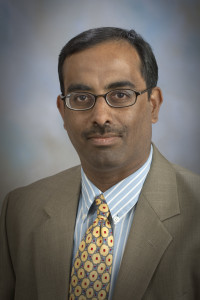
- This event has passed.
Special BRAHAM Seminar
April 5 | 3:30 pm - 4:30 pm
Seminar Speaker – V. Chandrasekar (Chandra), University Distinguished Professor, Colorado State University (host – A. Aiyyer). Join us in person or online.
Seminar Title – From Raindrops to Floods: Remote Sensing using Modern Radar and Satellite Observations

Abstract – Currently, most parts of the world are becoming increasingly urbanized. The world’s urban population had grown from 746 million in 1950 to 3.9 billion in 2014. This number is expected to surpass six billion by 2045 (United Nations report). The rapid urbanization has made densely populated areas more vulnerable to events such as urban floods. Therefore, monitoring the weather conditions in a timely manner with good spatial resolution is critical in terms of protecting lives and property. Radars have been used for weather applications over many decades. Long-range microwave radar networks are considered by many nations as an integral part of their weather sensing and forecasting infrastructures. With the introduction of new technologies, such as dual polarization, the sensing capabilities of these networks have been improved considerably over the past 30 years. However, one limitation of today’s large weather radar installations is their inability to cover the lower part of the atmosphere because of the Earth’s curvature and terrain blockage. Aimed at enhancing weather sensing in where people live, the US National Science Foundation Engineering Research Center for Collaborative Adaptive Sensing of the Atmosphere (CASA) introduced an innovative, collaborative, and dynamic sensing paradigm. Similar to monitoring at a local scale, global scale precipitation mapping is done using satellite borne radars and other sensing systems. This seminar will present a comprehensive overview of fundamental science, technology and system aspects of precipitation observing systems at local and global scale.
Bio – Dr. Chandrasekar (Chandra) has made pioneering contributions in the area of “Polarimetric Radar Observations of the Atmosphere”. Dr Chandra has extensive experience in Radar System Design, Radar Network Development, DSP Design as well as RF Communication Systems. He has contributed significantly to the areas weather radar and applications to Atmospheric Sciences. He also conducts research on related topics including Image Processing, Neural Network Applications and Large Scale System Simulation. He has organized and participated in six large multi-agency, national level experiments involving many radars, aircraft and ground instrumentation. He is an avid experimentalist conducting special experiments to collect in-situ observations to verify the new techniques and technologies. Dr Chandra is co-author of two textbooks, Polarimetric and Doppler Weather Radar (by Cambridge University Press) and Probability and Random Processes (by McGraw Hill). He has been a PI or Co-PI on several national level programs such as the Advanced Communication Technology Satellite (ACTS) program at CSU, DARPA NGI program, the current NASA TRMM mission and the future NASA GPM mission. He is currently a CO-PI of the CSU-CHILL radar facility and plays an important role in maintaining it as one of the most advanced meteorological radar systems in the world available for research, and continues to work actively with the CSU-CHILL radar supporting its research and education mission. He is a Co-PI and the Deputy director of the NSF Engineering Research Center , CASA ( Center for Collaborative Adaptive Sensing of the Atmosphere ), where he serves as the Research Director and provides leadership for the sensing research thrust . He has also been the Director of the prestigious and long standing Research Experience for Undergraduate Program at Colorado State University. He was elected Fellow of IEEE , The American Meteorological Society and CIRA in recognition of his contributions to “ Quantitative Remote Sensing”. He is a member of the National Academy of Sciences panel on “ Future Radar Systems beyond NEXRAD “ as well as the panel to assess “NEXRAD Flash Flood Forecasting Capabilities at Sulphur Mountain, California”. He has served as a visiting professor at the National research Council of Italy, as well as Distinguished Visiting Scientist at the NASA Goddard Space Flight Center. He has won numerous awards including, the NASA Technical innovation Award , 2002, Cermack Outstanding Advisor Award, 2001, Abell Outstanding Researcher Award, 2001, Distinguished Minority Service Award , 1999, Deans Council Award for Excellence in Teaching and Research, 1996, Halliburton Foundation Young Faculty Research Excellence Award, 1993, Vaisala Distinguished fellow and Abell Outstanding Research and Graduate Program Award, 2004.